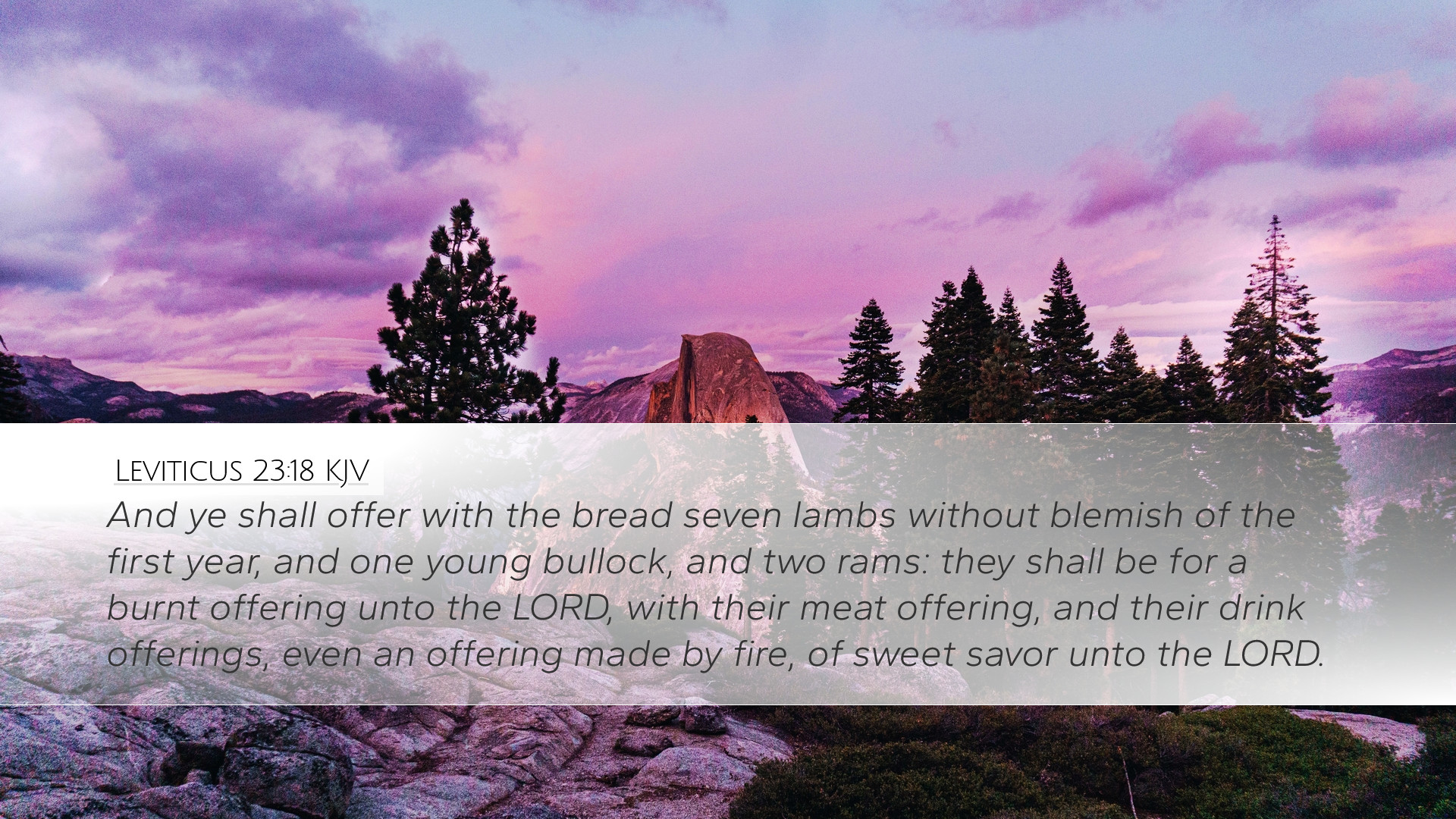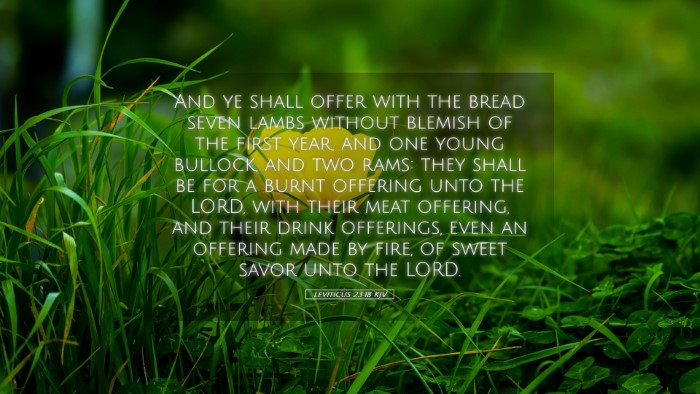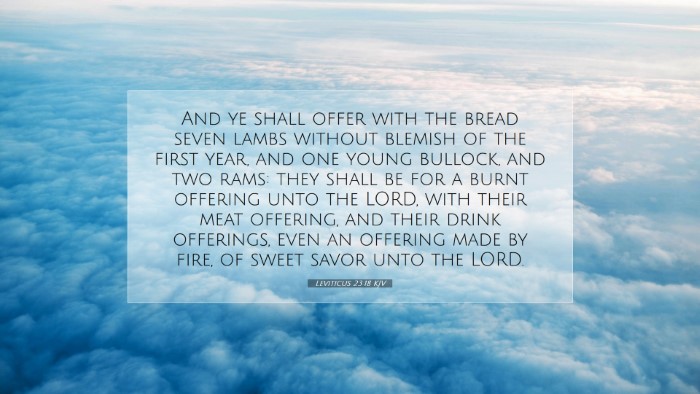Commentary on Leviticus 23:18
Verse: "And ye shall offer with the bread seven lambs without blemish of the first year, and one young bullock, and two rams: they shall be for a burnt offering unto the LORD, with their meat offering, and their drink offerings, even an offering made by fire, of sweet savor unto the LORD." (Leviticus 23:18)
Introduction
The book of Leviticus serves as a foundational text in establishing the laws and rituals of the Israelites. Leviticus 23 details the appointed feasts of the Lord, marking significant religious observances designed to draw the community closer to God. Among these, the Feast of Weeks, or Pentecost, is particularly highlighted in verse 18. This commentary draws from insights of several public domain sources including Matthew Henry, Albert Barnes, and Adam Clarke to provide a comprehensive understanding of this verse.
Contextual Background
Leviticus is often described as the "manual for holiness," addressing how God's chosen people are to live in relation to Him. The specific mention of offerings in this chapter emphasizes the importance of worship and the role of sacrifice. The Feast of Weeks occurs fifty days after Passover, celebrating the wheat harvest and commemorating God's giving of the Law on Mount Sinai.
Breakdown of the Verse
- Offerings: The verse specifies the types of offerings to be presented: seven lambs, one bullock, and two rams. These detailed instructions are significant in understanding the seriousness of worship.
- Symbolism of Numbers: The number seven represents completion and perfection, often linked with God’s divine order. The presence of seven lambs speaks to a complete offering of praise and acknowledgment of God's provision.
- Unblemished Sacrifices: The requirement for the lambs to be without blemish underscores the necessity for purity and perfection in sacrificial offerings, a principle later fulfilled in Christ.
Theological Implications
From a theological perspective, the offerings commanded in Leviticus 23:18 reflect the broader themes of atonement and thanksgiving within the covenant community. Matthew Henry comments on how these offerings were a means of expressing gratitude for God's provision.
Albert Barnes elaborates on the necessity of bringing a greater number of lambs compared to other offerings, indicating the abundance of gratitude that is required in the worship of God. This multiplicity serves to remind the worshipper of the bountiful blessings received from God.
Adam Clarke notes that the inclusion of both bread and offerings illustrates the holistic nature of worship—acknowledging not only spiritual but also physical sustenance provided by God.
Practical Applications
The practical takeaways from this verse for pastors, theologians, and students are multifold:
- Holiness in Worship: This verse calls for introspection regarding the quality and sincerity of worship. Are our offerings to God reflective of our understanding of His holiness and generosity?
- Communal Responsibilities: The emphasis on the people bringing offerings collectively highlights the importance of community in worship. It serves as a reminder for church leaders to foster a culture of communal thanksgiving in their congregations.
- Christological Fulfillment: The New Testament believers can reflect on how Christ fulfills these sacrificial laws, providing a perfect offering for humanity. This understanding can enrich doctrinal teaching and evangelistic outreach.
Conclusion
Leviticus 23:18 encapsulates important theological and practical lessons that resonate with believers today. The commanded offerings serve not only as historical practices but as living symbols of worship designed to foster a deeper relationship with God. By taking this ancient instruction to heart, believers are encouraged to offer themselves—flaws and all—as living sacrifices, propelled by the grace and love of our perfect Savior.


